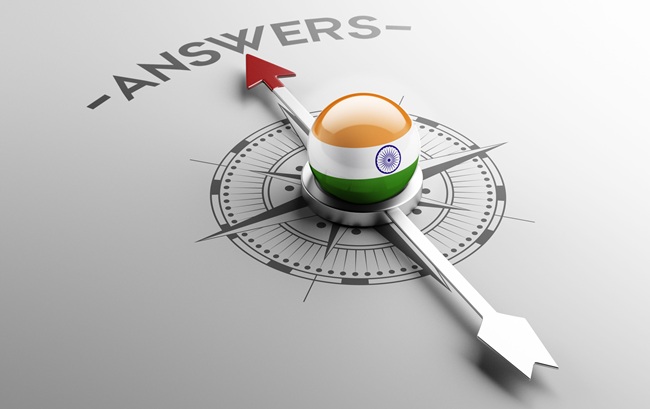Dec 05, 2025
Dec 05, 2025
Swarajya 2.0
Who truly ruled India after 1947? Was freedom simply transferred from one empire to another, with better PR and a shinier brochure? And in 1991, when the champagne glasses clinked for ‘liberalization,’ did we really witness economic reform or the quiet sale of sovereignty?

For decades, the Indo–US relationship has been dressed in the language of strategic partnership, mutual respect, and shared democratic values. The narrative was clean, crisp, and globally palatable. It came packaged with Harvard case studies, think tank white papers, and endless panel discussions on the “India growth story” — most often hosted not in Delhi or Mumbai, but in Washington, Boston, and New York.
The reality, however, was far less poetic.
1991: Reform or Surrender?
In mid-1991, India’s foreign exchange reserves had plummeted to $1.2 billion — barely enough to cover two weeks of imports. In desperation, we pawned 67 tons of gold to keep the economy afloat. But the gold was not the only thing mortgaged.
The IMF arrived not with aid but with a contract. The conditions were explicit: appoint Dr. Manmohan Singh as Finance Minister and bring in Montek Singh Ahluwalia as a key architect. Both were former insiders at the IMF and World Bank. They had the pedigree to rewrite India’s economic code to match the West’s operating system.
From that moment, India’s trajectory shifted. Sectors were opened up, markets were flooded with foreign goods, public sector units began to bleed, MSMEs quietly collapsed, and agriculture barely made it into the reform blueprint. The new mantra was integration, but the silent subtext was dependency.
The American Dream, Indian Edition
In the decades that followed, a new ecosystem emerged. America-funded editors shaped public opinion. Fulbright scholars became the cultural ambassadors of the West’s worldview. Policy “experts” in Delhi ran side-businesses for Washington while appearing to serve India’s interests. “Research” centres focused more on recycling Ivy League slides than studying Bharat.
The pitch to India’s youth was persistent and seductive:
For many, America became the ultimate destination, both physical and aspirational.
The Strategic Ally That Never Was
Historical evidence shows the hollowness of this ‘alliance.’
Even now, tariffs are up by 25 percent, and secondary sanctions loom over strategic purchases from other nations.
Swarajya 2.0 Timeline: From Independence to Full Sovereignty
| Year | Event | Impact on Sovereignty |
| 1947 | Political Independence | End of British colonial rule, but economic and strategic dependencies remain. |
| 1971 | US backs Pakistan during Bangladesh Liberation War | Reveals limits of Indo–US 'strategic' friendship. |
| 1991 | Balance of Payments Crisis | India pawns 67 tons of gold; IMF loan conditional on liberalization. |
| 1991 | Appointment of Manmohan Singh & Montek Ahluwalia | Introduction of Western economic framework into Indian policy. |
| 1998 | Nuclear Tests and US Sanctions | US imposes restrictions; blocks tech transfers to ISRO, DRDO, BARC. |
| 2000s | Proliferation of US-funded think tanks & NGOs | Shapes policy discourse toward US-aligned frameworks. |
| 2016 | Trump Presidency | Trade privileges withdrawn; visas tightened; transactional approach to India. |
| 2020s | Tariffs and Sanctions Threats | Reinforces vulnerability of over-reliance on US markets and systems. |
| 2025 | Swarajya 2.0 Call | Shift toward total sovereignty in economic, strategic, digital, and psychological domains. |
Trump: The Accidental Truth-Teller
Ironically, it took Donald Trump — a man celebrated for bluntness, not diplomacy — to strip away the gloss. By shutting down trade privileges, tightening visas, and treating India like just another trade rival, Trump exposed what Delhi’s elite had long refused to admit: we were never equals, only useful instruments.
The so-called “shared values” evaporated under the heat of hard economic bargaining. The polite fiction of strategic partnership dissolved into a transactional reality.
The Case for Swarajya 2.0
If 1947 gave us political independence and 1991 compromised economic sovereignty, 2025 must mark the start of Swarajya 2.0 — a full-spectrum reclamation of sovereignty across economic, strategic, digital, and psychological dimensions.
Practical steps for this new era include:
This is not a call for isolationism but for balanced engagement, where India negotiates from a position of confidence, not compliance.
Global Lessons in Self-Respect
Japan rebuilt itself after World War II without surrendering cultural identity to its allies. South Korea transformed into a technological powerhouse by protecting local industries until they were globally competitive. Even smaller nations like Israel have shown how strategic autonomy can coexist with selective partnerships.
India can do the same, but only if we are willing to discard the mythology of 1991 as a golden dawn.
Now ask yourself: Who decided the price of our sovereignty in 1991? Who writes the rules of our trade, technology, and security today?
And most importantly — in the decades to come — will India still be content being “useful,” or will it finally insist on being truly independent? Let the silence sting. Let the truth echo. Let the decolonization begin.
Image (c) istock.com
31-Aug-2025
More by : P. Mohan Chandran